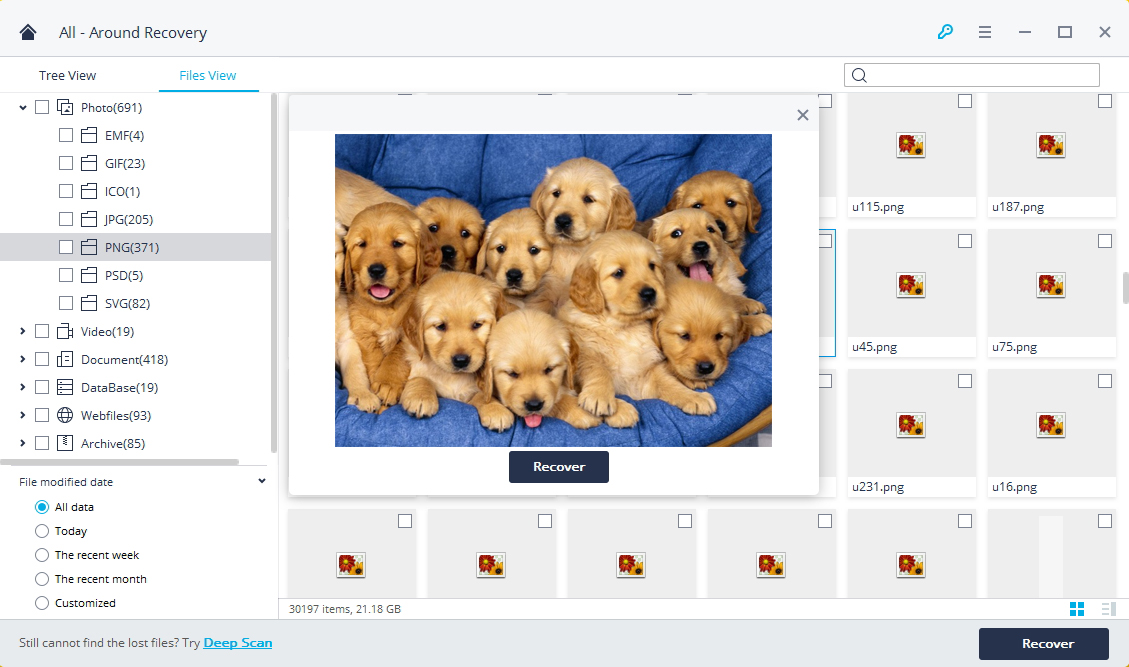
Best Free Mac Software For Undeleting Files
The best free data recovery software for Mac available online is described below. These five applications vary in their characteristics. However, all share one commonality, they are free, and therefore useful for the casual user. Disk Drill is the free top data recovery app for Mac OS X. Recovery Toolbox File Undelete Free is a freeware to search and save deleted files. It lets you restore your deleted files in 3 steps only. It lets you restore your deleted files in 3 steps only. Scanning a drive displays a list of deleted files from that drives.
We all know the importance of making regular backups, but that's of little comfort to anyone – even those with good backup regimens – who suddenly find themselves confronted by the stomach-churning feeling of data loss. That's why it's always a good idea to have a reliable free file recovery program on hand for emergencies.
Whether it's a virus infection, a hardware failure, or just human error, it's all too easy to lose vital files. As soon as you've become aware of data loss, it's critical you stop using the drive affected immediately. Whether the drive itself is failing or you've simply deleted a file accidentally, this is the golden moment when you may be able to get your data back before it's gone for good. We've picked five of the best free file recovery tools in the business. Just pick the one closest to your requirements and with a bit of luck (and no small measure of help from the app involved), you could yet save your files.

Makes things as easy and stress-free as possible. It opens by default to a file recovery wizard, which advanced users can subsequently skip. © Provided by Future Publishing Ltd. Editor's choice: GIMP From here, choose the type of file you're trying to recover (picture, documents, compressed, emails and all files are among those on offer) and it'll focus its search accordingly.
You can target your search to a specific location or search all your drives, and you can opt to choose a quick or deep scan. The latter takes much longer, but flushes out more results. Then click 'Start' and wait for the scan to complete. Once done, your results are presented, with each recovered file given a rating depending on its condition.
You can recover files direct from here or switch to Advanced Mode for a frankly better view, offering file preview, information and a peek at the file's header. • • If you’ve ever used IObit Uninstaller or Advanced SystemCare, it’ll be no surprise that is refreshingly easy to use, with an intuitive interface that makes file recovery as painless as possible. Select either the types of file you’re looking for (including documents, videos. Music and pictures) and the drive where they were stored, then click ‘Scan’. There’s no ‘deep’ option, but scans are fast and turned up the files we were looking for.
IObit Undelete gives you an estimate of recoverability (excellent or poor) to indicate whether restoration is likely to be successful. Hovering your mouse pointer over the eye icon on the right lets you preview the file if possible, and restoring it is as simple as checking the appropriate box, clicking ‘Recover’ and choosing where to save it. Avast! free antivirus for mac usb. IObit Undelete might not offer as much granular control as Recuva, but it’s quick, effective and easy to use – ideal if you’ve lost something important and panic is setting in. Highly recommended. • Our third favorite free file recovery tool is often overlooked. Scores major points because it's capable of recovering data from a wide array of drives, including 2TB+ drives rescued from a fried external drive enclosure with proprietary formatting (it's a long story).
• Make sure each frame text object is just as high so that all lines are contained. Vertically align text word for mac. • Select all three texts and use the align toolbar window to align these three on their vertical middle axis. No extra space at the bottom. • Place each text centered above it's corresponding square by using the alignment feature.
DMDE may not be the simplest tool to use, but it's one of the most effective, and will help you with the basics. DMDE works by letting you select a drive and then identifies all mountable partitions, with the most obvious choices highlighted. If successful, you're then shown a File Explorer-like view to browse the drive and recover what data you need from it. There are restrictions on the way you can recover data from the free version, but there's no limit to how much you recover. If you want a simpler and faster recovery process, just upgrade to the Express or Standard edition.